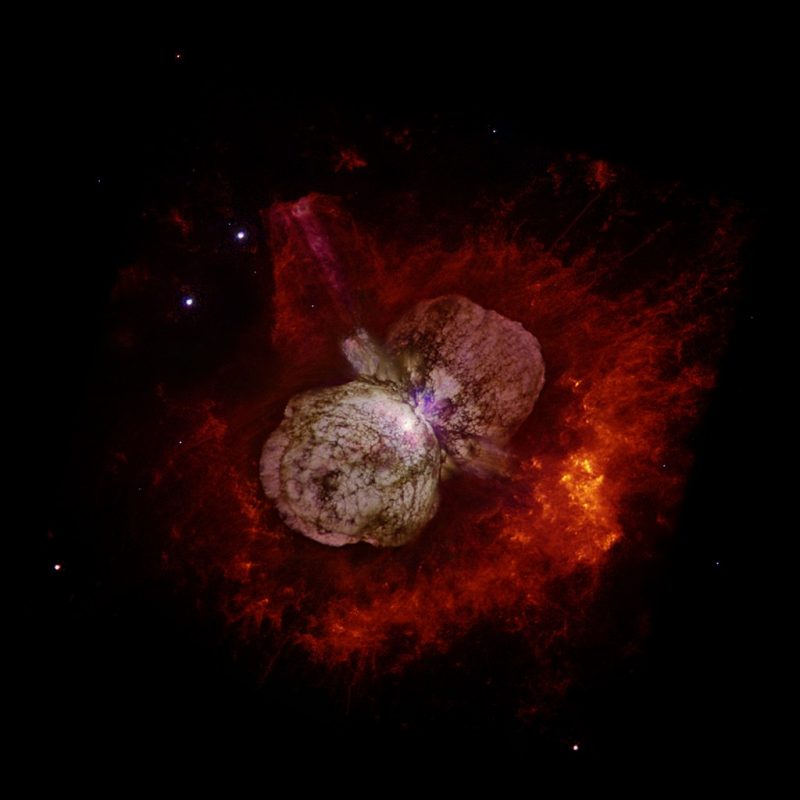
Carina the Keel
You’ve seen the famous images of the erupting star and nebula, now learn its constellation. Carina the Keel has various claims to fame, including housing the 2nd brightest star in the night sky, Canopus. But it’s probably best known as the location of the star Eta Carinae and its dual-lobed nebula, the Homunculus Nebula. The constellation Carina was once part of a larger constellation – Argo Navis – the mythological ship of Jason and the Argonauts. The ship is now three separate constellations: Carina the Keel, Vela the Sails, and Puppis the Stern. Carina the Keel is the most southerly of the three, and Southern Hemisphere residents get the best view.
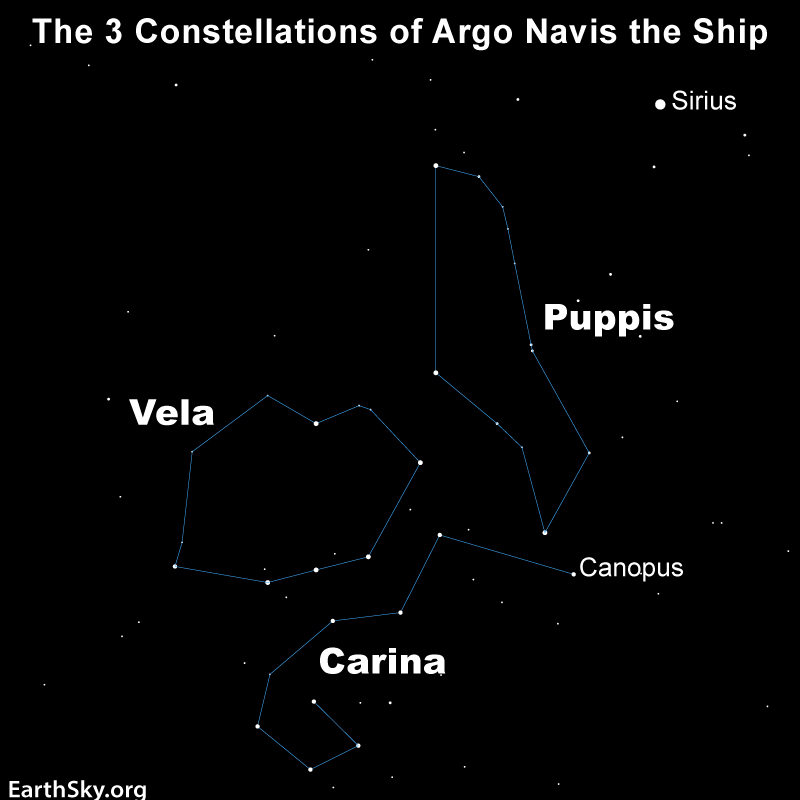
Stars of Carina the Keel
If you live at a southerly latitude in the Northern Hemisphere and have looked south on winter evenings, you’ve probably seen the 2nd brightest star in the sky, Canopus. This is the brightest star in Carina. Canopus, or Alpha Carinae, shines at magnitude -0.62 from a distance of 313 light-years.
The 2nd brightest star in Carina is Beta Carinae, or Miaplacidus. It shines at magnitude 1.67. The star lies about 20 degrees from the south celestial pole and is 111 light-years away from us.
Forming a triangle with Alpha and Beta is the 3rd brightest star in Carina, Epsilon Carinae, or Avior. It shines at magnitude 1.86 from a distance of 632 light-years.
But one of the most famous stars in Carina is one that isn’t all that bright. Eta Carinae is 4th magnitude except when it’s in an outburst. It rivals Betelgeuse as the best candidate for a star that may soon go supernova. The first documentation of Eta Carinae’s outburst was in 1841, when it was briefly the second brightest star in the night sky. Eta Carinae lies about 7,500 light-years away from Earth inside our own Milky Way galaxy.
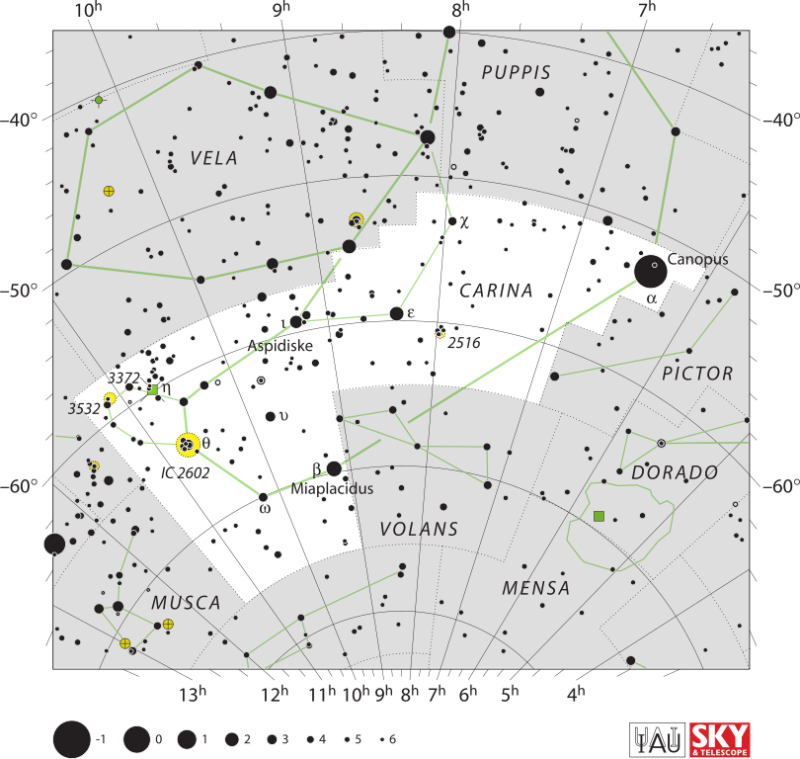
Deep-sky objects in Carina
Carina is rich in deep-sky objects because of its location atop a portion of the Milky Way. The most famous deep-sky object in Carina is undoubtedly the nebula that surrounds the star Eta Carinae. This is the Homunculus Nebula. It lies on the opposite side of the constellation from Canopus.
The Homunculus Nebula is just a small part of the much larger Carina Nebula, or NGC 3372. The Carina Nebula is a vast star-forming region in the constellation Carina. It contains one of the youngest known star clusters at half a million years old. The Carina Nebula is four times as large as the Orion Nebula in our sky. Another popular portion of the Carina Nebula is the dark nebula known as the Keyhole Nebula.
One well-known star cluster in Carina is IC 2602, or the Southern Pleiades. This 2nd-magnitude grouping surrounds the star Theta Carinae. Theta Carinae is just 4 1/2 degrees from Eta Carinae. About 60 stars lie within the area, which is less than 500 light-years from Earth.
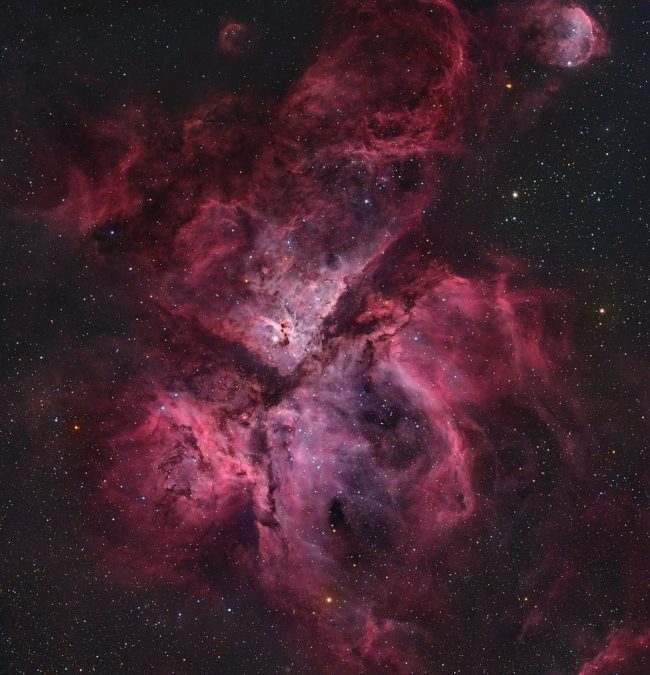
Bottom line: Carina the Keel is a constellation best viewed from the Southern Hemisphere. It contains the sky’s 2nd brightest star and some amazing nebulae.
The post Carina the Keel, home to an erupting star first appeared on EarthSky.

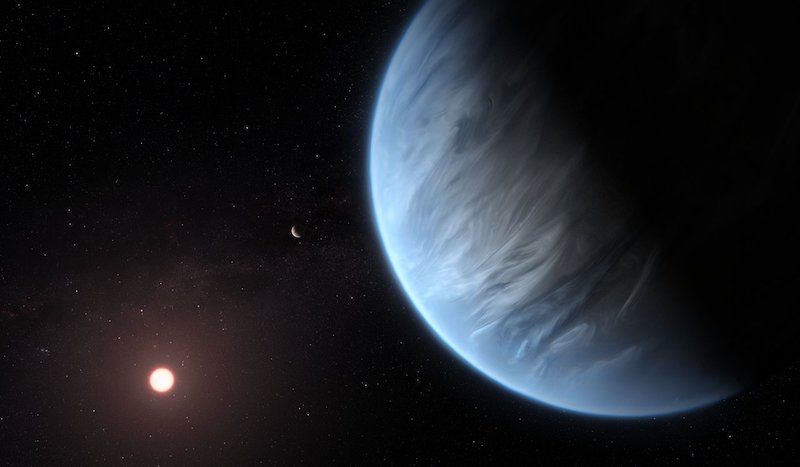


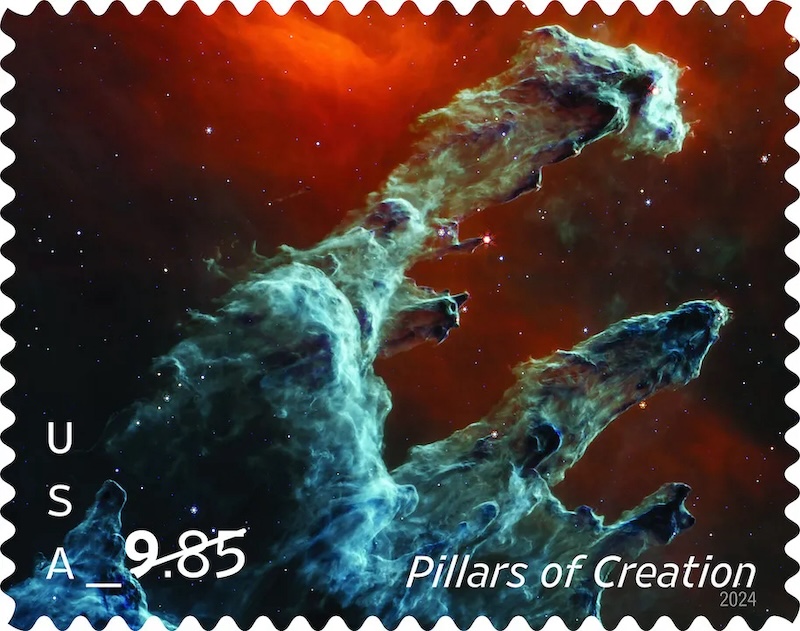
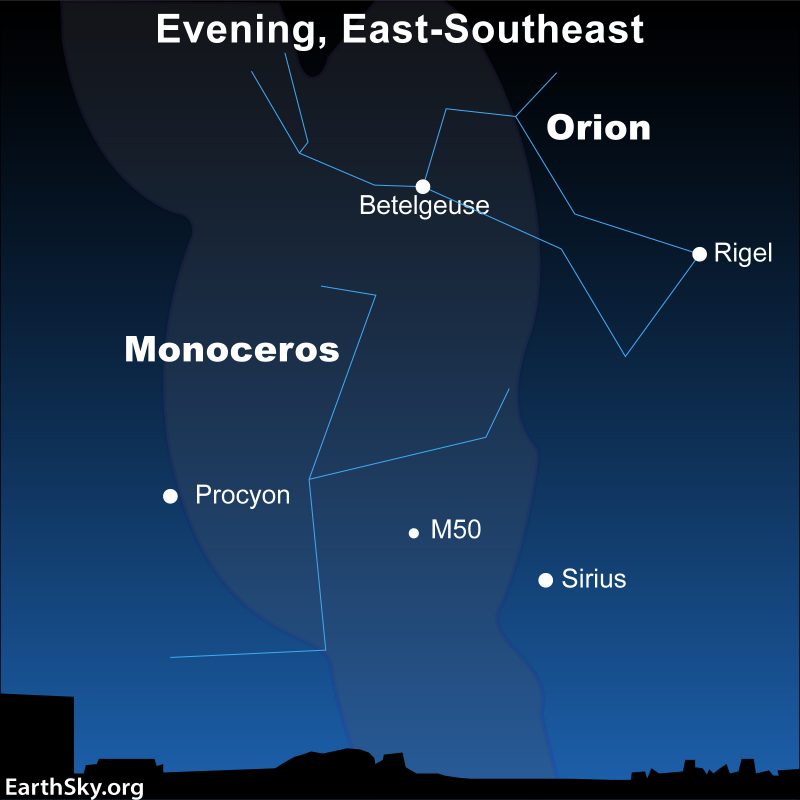
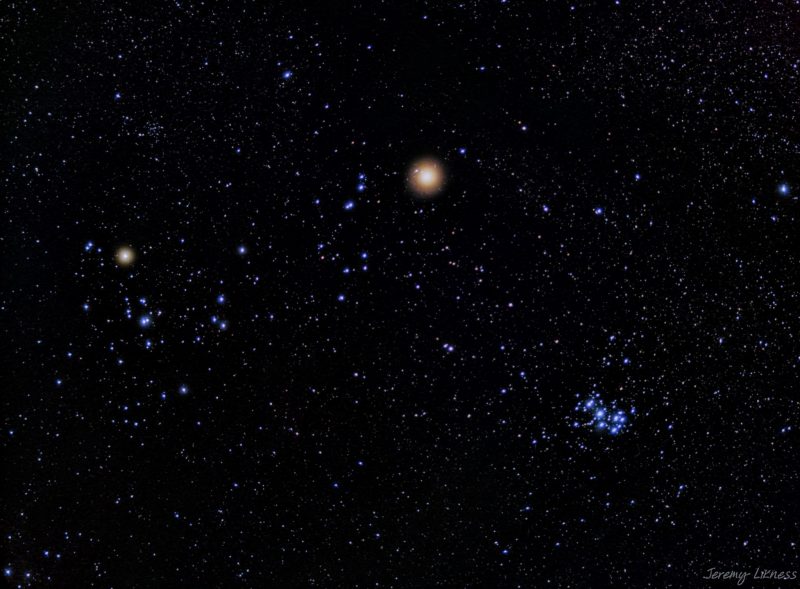
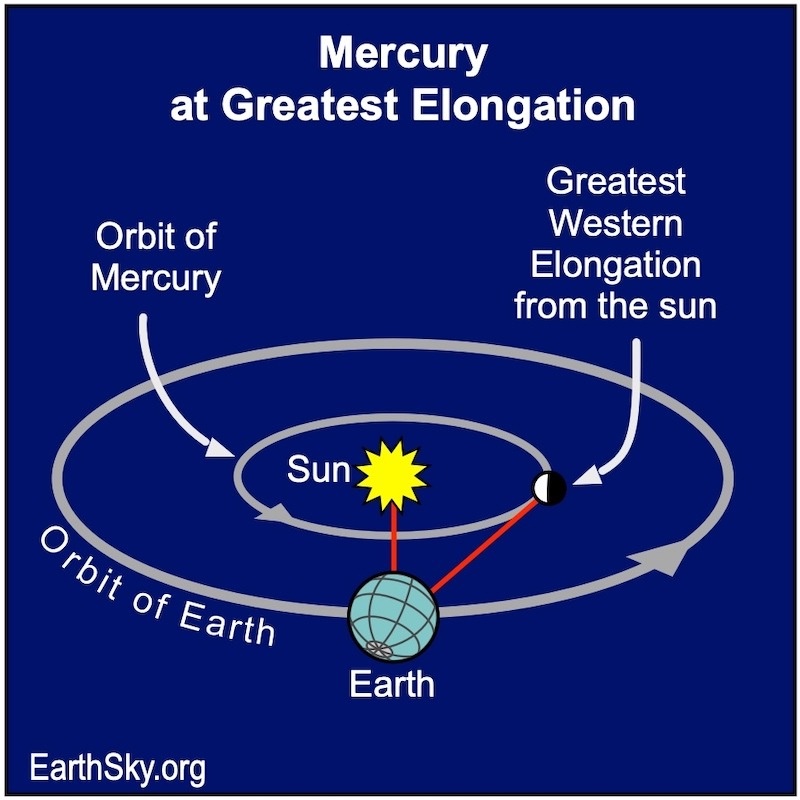
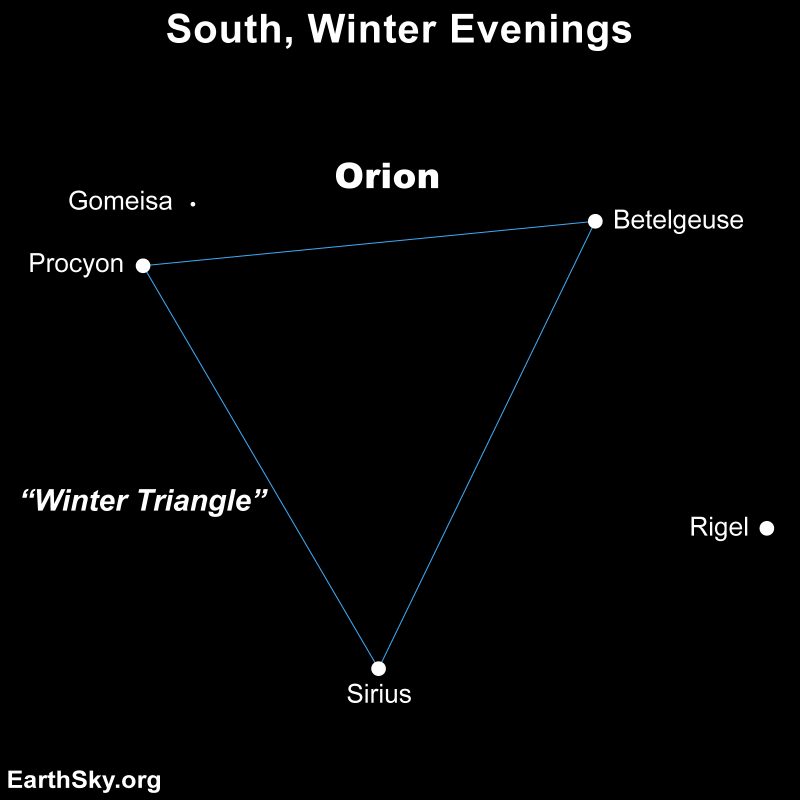
0 Commentaires